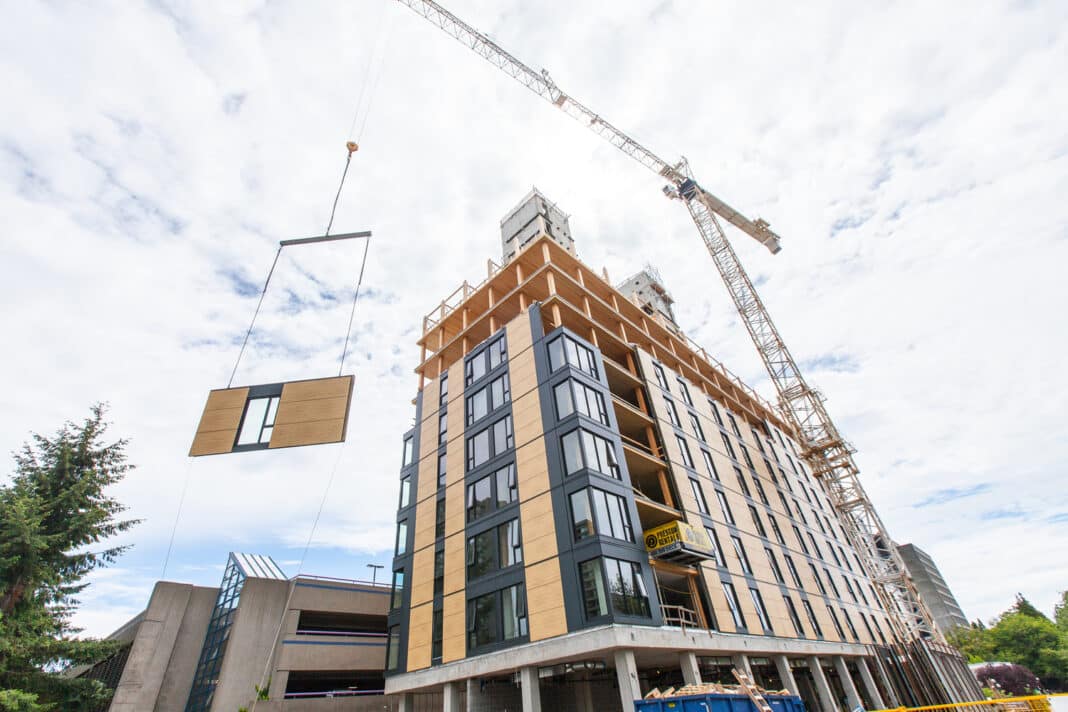Canada’s most densely populated city has now approved changes to its building bylaws, allowing developers to build encapsulated buildings up to 18 storeys, following a decision by the Vancouver City Council yesterday.
The new bylaws come after Canada’s third-largest province changed its construction code to allow British Columbia developers to build all-timber buildings up to 18 storeys – a 50% increase permitted under the old code.
As part of the bylaws, officials encourage developers to use timber-based building systems in mid-rise and high-rise commercial and residential projects, low—and medium-hazard industrial use, school buildings, and aged care facilities amid a national push to use mass timber, prefab, and panalization to address Canada’s construction crisis.
“Allowing taller mass timber construction and expanding the use of mass timber to new building types and uses within the building bylaw will make it easier to build with low carbon materials, support future housing affordability and represent an important step in reducing our carbon pollution from construction,” said a staff report that went before council.
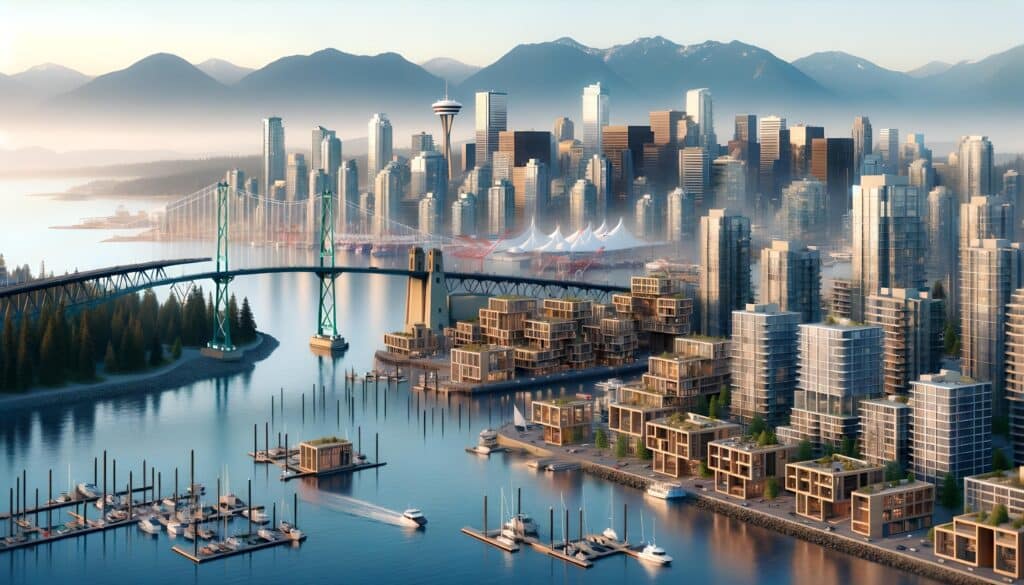
Vancouver, characterised by high-rise and mixed-use development, has embraced mass timber to build the next generation of buildings, including Vienna House, which is part of the city’s push to develop build-to-rent accommodation.
Tackling fire concerns
Addressing fire concerns, Saul Schwebs, the city’s chief building official, told the council, “In certain cases, it can be safer than light-frame wood construction, but compared to a concrete building, it’s probably equivalent, perhaps a little more fire safe in certain circumstances,” noting the thickness of the material. “When there is a fire in a mass timber building, we see charring that takes place, and the charring helps protect the remainder of the structure.”
Addressing the council, Shawn Keyes, Woodworks BC’s executive director, supported the council’s push to increase building heights but was concerned about restricting the amount of exposed mass timber in residential buildings between nine and 12 storeys tall.
“The additional requirements for gypsum wallboard — encapsulation — within the City of Vancouver may cause confusion for the design and construction community and reduce their ability to provide consistent solutions across the province,” Keyes said.
Earthquake requirements
Vancouver is one of North America’s most highly seismic cities, with the report showing that mass timber is five times lighter than concrete and is, therefore, more advantageous in a building’s ability to withstand an earthquake.
“It can be much easier and more cost-effective to design mass timber buildings to a higher seismic standard, and modular components can make it easier to repair, reducing the time needed to resume occupancy after a large earthquake,” the report said.
“Because wood is a lighter material than concrete and steel, soils with reduced bearing capacity can support taller buildings constructed from wood than concrete and steel structures,” the report said. “This advantage allows construction on marginal soils.”
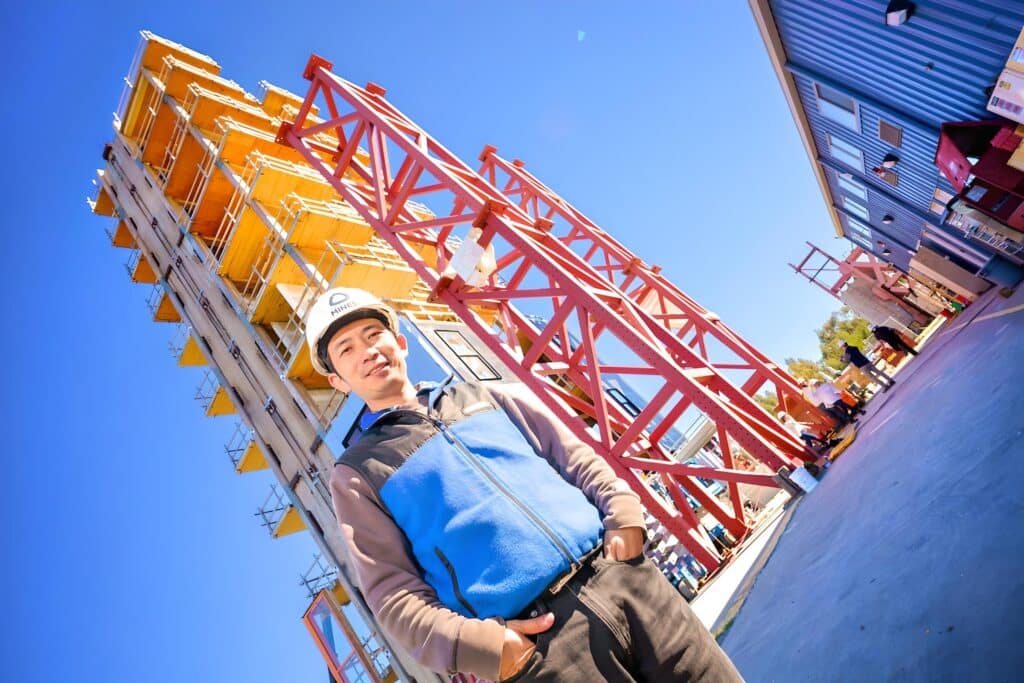
Tallwood House student residence
Vancouver proper has no examples of an 18-storey mass timber building, but one was built recently at the University of B.C. Tallwood House student residence at Brock Commons is one of the tallest mass timber buildings in the world.
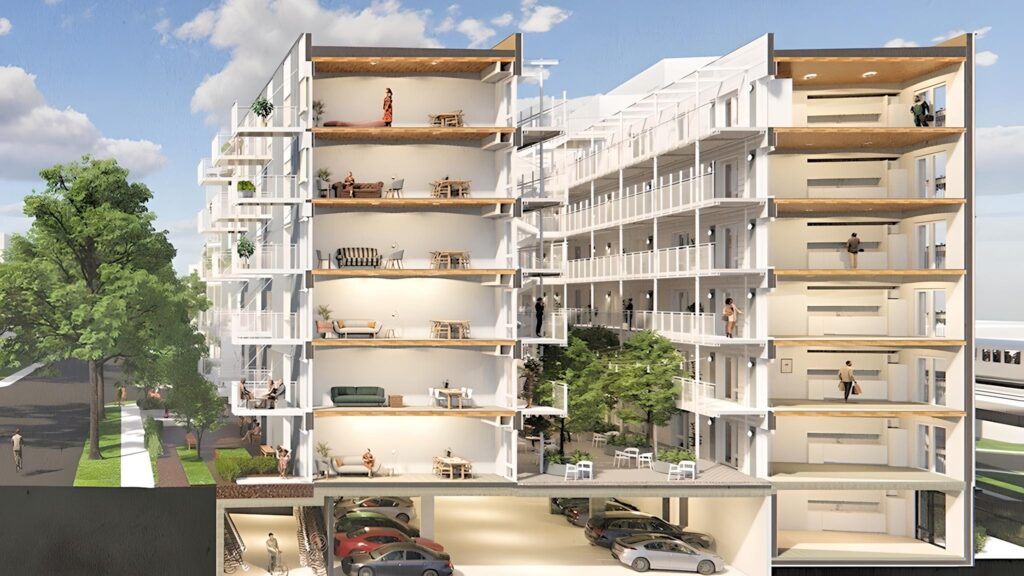
Other mass timber buildings include a luxury condo project called Terrace House on West Hastings Street and the 10-storey Nature’s Path head office, which is under construction near the East Van sign at Clark Drive and Great Northern Way.
Both projects were approved under what the city calls an “alternative solutions process,” where building code and fire experts review applications that go beyond provisions in a building code, which allowed for only six storeys at the time.
In 2020, the council amended the bylaw to include encapsulated mass timber as a new construction type and allow new developments up to 12 storeys.
“Since then, many [mass timber] buildings, both in Canada and around the world, have been successfully constructed that exceed the prescriptive boundaries of what the Vancouver building bylaw would permit,” the report said.
“With the supporting research and real-world application, these buildings have demonstrated that they are both safe and practical.”
Can Vancouver become a global leader in mass timber buildings?
Last month, Wood Central reported that the Royal Bank of Canada (RBA), Canada’s largest bank, said Vancouver could lead mass timber construction. More than 660 mass timber projects (up to the end of 2022) are rising across Canada – almost double the number rising across the U.S. until that point. Of those out of the ground or in the pipeline, 87% of projects are clustered around the populated centres of British Columbia, Ontario and Quebec.
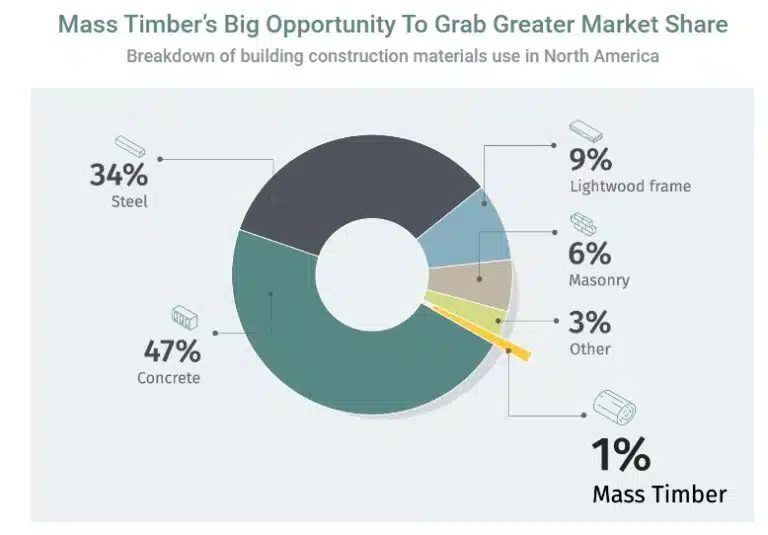
However, the RBA argues that, with the correct policy settings, a pivot to prioritising mass timber construction over steel and concrete will not only cut Canada’s total emissions by 10% over the next seven years but will also unlock a CA $1 billion mass timber industry, “with a share of this growth anticipated to flow to Indigenous communities.”
- To learn more about Canada’s mass timber opportunity, read RBA’s report, published October 27, 2023.



